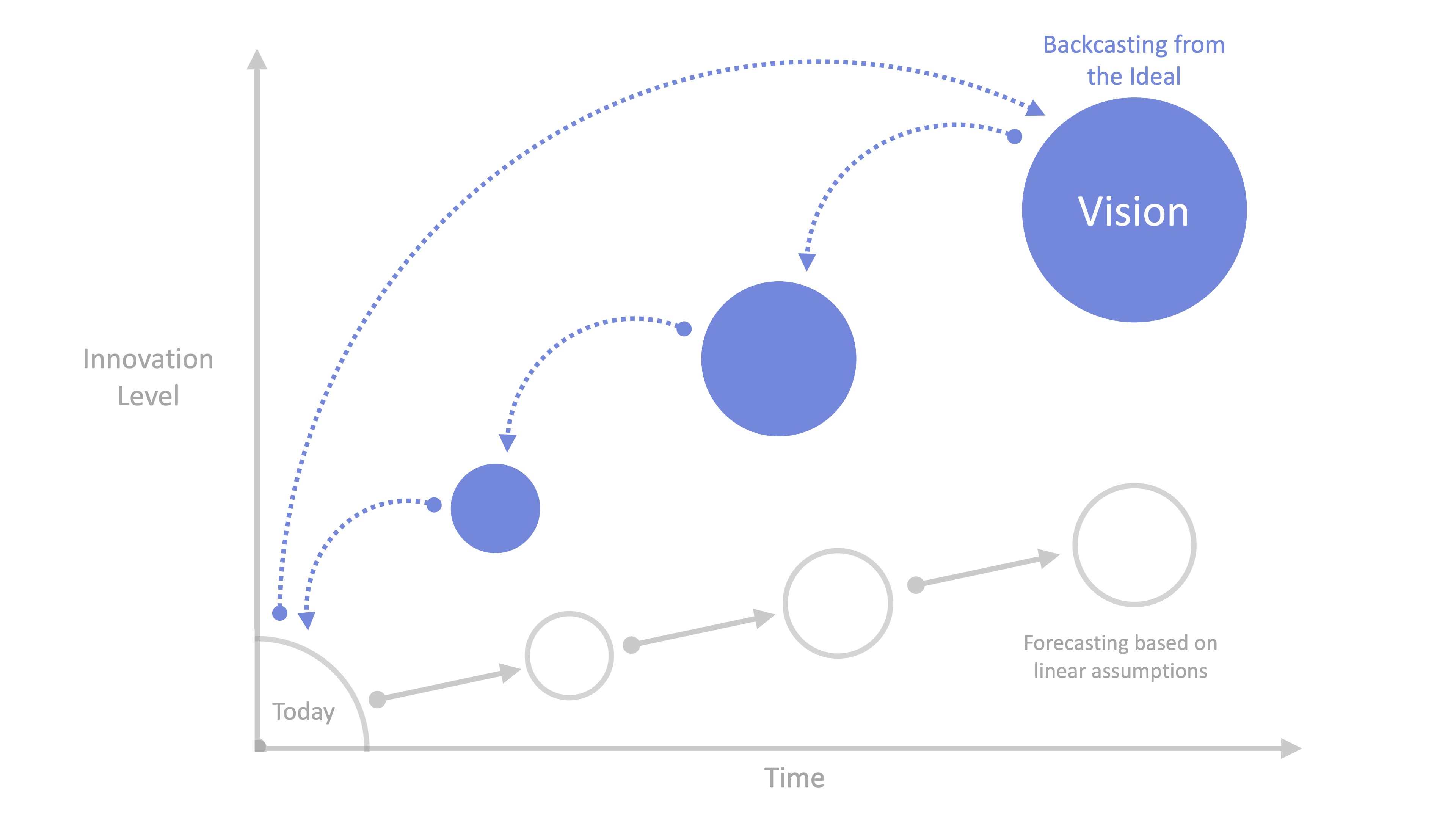∆ Tool: NETWORK BACKCASTING

Backcasting is a planning and envisioning tool that is really useful when you are dealing with complex problems and when the current trends are part of those problems. Network Backcasting is a special tool that helps us understand how things in a network evolved or how they became the way they are today and where it can lead us!
Imagine you have a complicated puzzle that represents a network, like a social network with many connections between people. Now, you have the final picture of the puzzle, which shows the network as it is now. But you don't know how it became like that or what it looked like in the past.
Network Backcasting is a tool that helps us work backwards from the final picture to figure out how the puzzle pieces fit together in the past. It allows us to reconstruct the past states of the network and understand how it evolved over time.
Using this tool, we can analyze historical data and trace the changes and connections that happened in the network, helping us understand its development and how it reached its current shape. It's like solving the puzzle backwards to see how it was put together step by step. The tool was created by John B. Robinson from the University of Waterloo
This method is aimed at networks that need to create a strategic plan. It can give clarity about short/medium and long-term actions, and to:
- define a strategy for the network for a certain period
- highlight goals and objectives
- create a clear road map
So, let's start!
You will need a board with markers/bigger sheets of paper and stickers OR an online Miro board template: https://miro.com/miroverse/backcasting-method/?social=copy-link
TIME (min/max): 60 – 90 minutes
NUMBER OF PARTICIPANTS (min/max): From 5 to 30
Steps:
⇒ INTRODUCTION. FRAMING OF THE ACTIVITY - 5 minutes
Backcasting is a planning method that starts with defining a desirable future and then works backwards to identify policies and programs that will connect that specified future to the present.
Backcasting involves establishing the description of a very definite and very specific future situation. It then involves an imaginary moving backwards in time, step-by-step, in as many stages as are considered necessary, from the future to the present to reveal the mechanism through which that particular specified future could be obtained from the present.
⇒ PHASE 1 – 20 minutes:
List down your long-term goals. Think of a time frame between 1 and 5 years.
Open the template in the Miro board link.
Start to define a time frame your network wants to work with.
It could be the time the council will last, or looking even further.
Start to identify several goals that your network wants to reach at the end of the chosen period.
Use the sticky notes and apply them at the end of the timeline.
It's good not to write too many objectives. Try to stick within 5-10 goals that have priority in your network.
⇒ PHASE 2 – 25/30 minutes
Work backwards to figure out the necessary actions to achieve the long-term goal. Step by step.
Divide into smaller groups that will work on two main objectives each.
Starting from the goal to be achieved go backwards in time and describe the actions that need to be taken one year before the achievement, and slowly go back to the present. For each action write a brief description of the activity. When is the deadline, and who is taking charge of it? After 20 minutes come back to the larger group, and present the results.
⇒ PHASE 3 – 15/20 minutes
Collect insights into difficulties that might be encountered, steps that need to be taken and resources needed to achieve the goals.
Reflection questions:
Once the template is complete, have a general overview of the results.
How do you feel? Is it overwhelming? Is it achievable?
If there are too many activities, try to select only the goals that are most important for the network, to reduce stress.
Are the activities covered with a list of one main person focalizing each activity?
Are the deadlines achievable?
Sometimes less is more. Having too many goals could lead the group to a sense of stress, and if those goals are not fully achieved could generate a feeling of failure. Less goals are more reachable and give a successful feeling to the group.
Open also a space for doubts, questions and suggestions for the responsibilities.
⇒ DEBRIEFING THE EXERCISE – 15 minutes
Final sharing about how the exercise went and the dynamics within the group.
OTHER REMARKS - FROM FACILITATOR TO FACILITATOR
Opening the space for people’s dreams uplifts the group’s energy and creates personal links that may otherwise remain hidden. This method is also rank-effective, as it highlights, safely and respectfully, areas where leaders can unveil their “dream space” and become learners of other, and less prominent, members. It can be applied to create circles in a sociocratic organization

